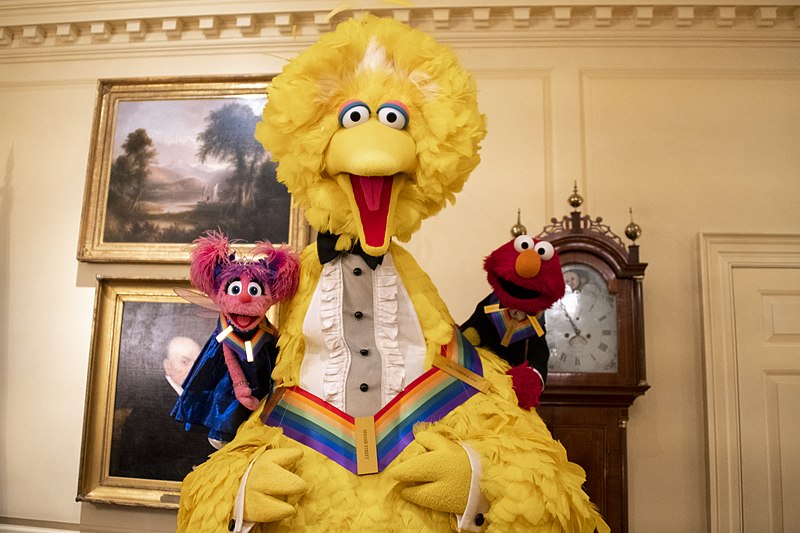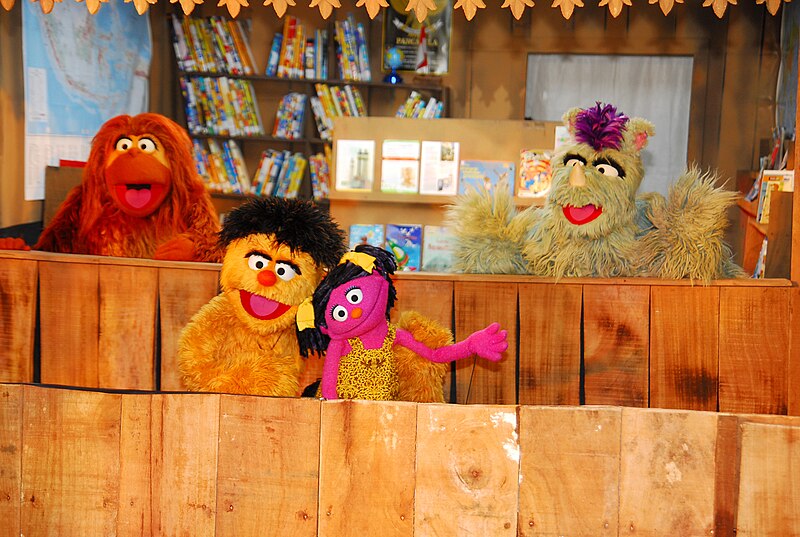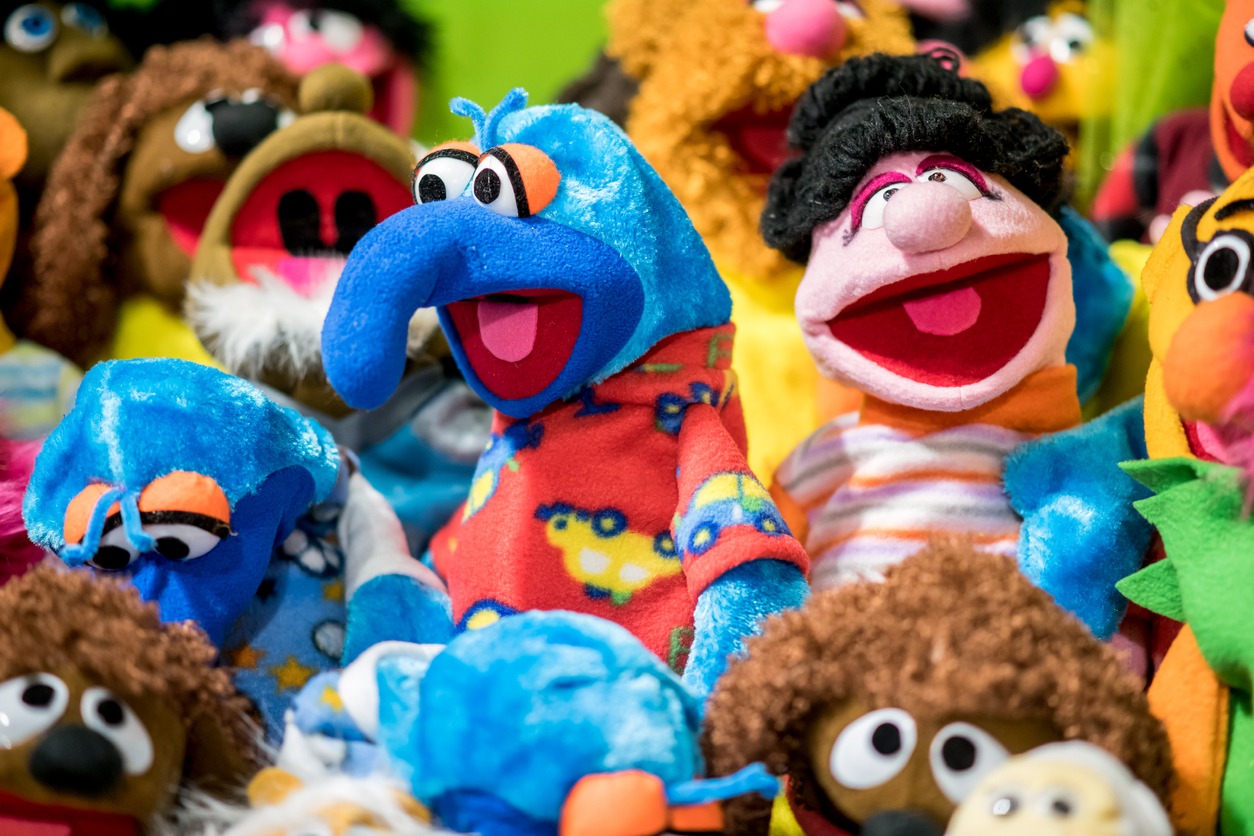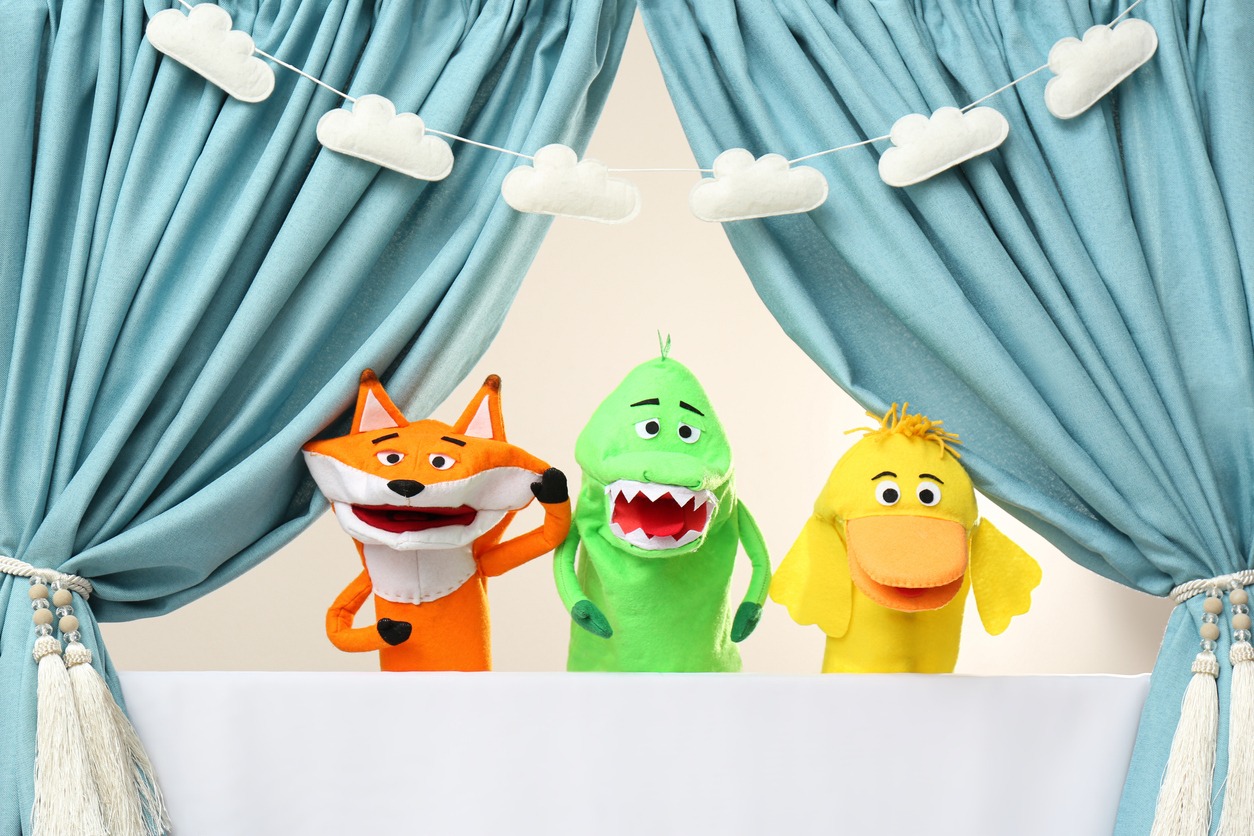In the 1980s, long before computer-generated imagery (CGI) became the norm in film and television, puppetry was the cornerstone of visual storytelling. This era, often regarded as the golden age of puppetry in entertainment, saw an extensive and imaginative use of puppets to bring to life characters and worlds that captivated audiences. Shows like “Fraggle Rock” and movies such as “Labyrinth” not only showcased the artistry and creativity of puppeteers but also set a benchmark in the realm of practical effects.
Puppetry in the ‘80s was a medium that blended art, technology, and storytelling in a way that resonated deeply with viewers of all ages. The perceptible realism and charm of puppet characters offered a unique experience that CGI has yet to imitate fully. In this article, we will discuss the influential world of 1980s puppetry, exploring its impact on film and TV, the ingenuity behind its magic, and its lasting legacy in an increasingly digital world.
The Golden Age of Puppetry in Entertainment
The 1980s are often fondly remembered as the golden age of puppetry in entertainment. This period marked a high point in the use of puppetry in film and television, where the art form was not just a novelty but an integral part of storytelling.
Emergence of Puppetry as a Mainstream Feature
The 1980s saw an unprecedented integration of puppetry into mainstream media. Unlike in previous decades, puppet characters and creatures became central to the narratives of numerous films and TV shows. The limitations in computer-generated effects during this era meant that filmmakers and TV producers turned to puppetry as a viable and creative solution for realizing imaginative concepts.
Highlights of Puppetry in 1980s Cinema
Filmmakers pushed the boundaries of what could be achieved with puppetry, using sophisticated mechanisms and designs to create complex puppet characters that could convey a wide range of emotions and actions. Movies like “Labyrinth” and “The Dark Crystal” featured entire casts of puppet characters, creating rich, immersive worlds that were groundbreaking for their time.
Role in Children’s Television
Puppetry played a significant role in children’s programming. Shows like “Fraggle Rock” and “Sesame Street” used puppet characters to both entertain and educate, addressing complex topics in an approachable manner. The tangible, relatable nature of puppets made them particularly appealing to young audiences, fostering a sense of connection and wonder.
Puppetry as an Art Form
The creation and manipulation of puppets involved a high degree of craftsmanship and skill. Puppeteers, designers, and builders collaborated to bring inanimate objects to life, often under challenging conditions. Puppetry in the 1980s was a collaborative effort that blended art, performance, and technical prowess, showcasing the talent and creativity of the artists involved.
Impact on Popular Culture
Many puppet characters from this era became cultural icons, beloved by audiences and influential in shaping popular culture. The success and popularity of puppetry in the 1980s helped establish it as a credible and respected medium in entertainment, paving the way for future innovations and inspiring new generations of puppeteers and filmmakers.
The 1980s can be seen as the golden age of puppetry in entertainment, a time when the art form flourished and left an indelible mark on film and television. This era highlighted the versatility and emotional depth of puppetry, proving that it was capable of captivating audiences and telling stories in a way that other mediums could not replicate.
Iconic Puppetry Examples in 1980s Cinema
The 1980s were a treasure trove of iconic puppetry in cinema, with several films showcasing the remarkable potential of this art form. These movies not only stood out for their imaginative storytelling but also for the technical mastery and creativity evident in their puppetry.
1. Labyrinth (1986)
Directed by Jim Henson, “Labyrinth” is a quintessential example of puppetry’s magic, featuring a range of fantastical creatures brought to life with intricate puppetry. The film’s innovative use of puppet characters, including the iconic Goblin King played by David Bowie alongside puppet creatures, showcased a seamless blend of human and puppet interactions, setting a high standard for visual storytelling.
2. The Dark Crystal (1982)
Another Jim Henson masterpiece, “The Dark Crystal,” was groundbreaking for its exclusive use of puppets without any human actors. The film created a rich, immersive fantasy world, a feat unmatched at the time. The sophisticated puppetry in “The Dark Crystal” involved complex mechanisms and detailed craftsmanship, representing a significant leap in the art form’s capabilities.
3. E.T. the Extra-Terrestrial (1982)
While not exclusively a puppetry film, “E.T.” featured a puppet as the central character. The emotional depth conveyed by E.T., a puppet, highlighted the ability of puppetry to create strong emotional connections with audiences. The use of both animatronics and manual puppeteering for E.T. demonstrated the versatile applications of puppetry in cinema.
4. Gremlins (1984)
“Gremlins” stood out for its blend of horror and comedy, brought to life through the mischievous and sometimes terrifying puppet characters. The use of puppetry for the Gremlins allowed for a level of interaction and physical comedy that added to the film’s unique charm and appeal.
5. Return to Oz (1985)
This sequel to the beloved “Wizard of Oz” made extensive use of puppetry to recreate the magical land of Oz, introducing new characters and creatures. The film featured innovative puppet designs, including Jack Pumpkinhead and the Gump, which added a fresh dimension to the Oz universe.
These iconic examples from the 1980s not only highlight the technical and artistic achievements of puppetry but also emphasize its powerful role in storytelling. The enchanting worlds and memorable characters created through puppetry in these films left a lasting impact on audiences and the film industry, demonstrating puppetry’s unique ability to bring the fantastical to life.
Puppetry in 1980s Television
The 1980s was not only a significant decade for puppetry in cinema but also a golden era for puppet-based television shows. These programs, which captivated both children and adults, showcased the versatility and emotional range of puppetry as a storytelling medium.
1. Fraggle Rock (1983-1987)
Created by Jim Henson, “Fraggle Rock” was designed to entertain while subtly teaching lessons about diversity, social complexity, and understanding. The show’s international production and translation into multiple languages made it a global phenomenon. Its blend of music, humor, and life lessons, delivered through vibrant puppet characters, resonated with audiences worldwide.
2. The Muppet Show (1976-1981)
Though it began in the late 1970s, “The Muppet Show” continued to be influential into the 1980s. Its appeal to both children and adults set a high bar for puppetry shows, blending comedy, variety, and musical performances. The show’s iconic characters, such as Kermit the Frog and Miss Piggy, became cultural icons, influencing various aspects of pop culture.
3. Sesame Street
“Sesame Street” used puppetry to create an engaging and educational experience for children. Its focus on literacy, numeracy, and social skills made it a staple in children’s programming. The continued popularity of “Sesame Street” into the 1980s and beyond is a testament to the enduring power and relevance of puppetry in children’s education and entertainment.
4. ThunderCats (1985-1989)
While primarily an animated series, “ThunderCats” included puppetry in its production process, particularly in its opening sequence, blending different mediums to create a distinctive visual style.
5. Alf (1986-1990)
“Alf” featured a puppet as the main character, a rarity for a prime-time sitcom. The show’s unique concept and humorous script made it a surprising success. The technical aspects of operating the Alf puppet were innovative for the time, adding to the show’s charm and appeal.
Puppetry in 1980s television played a critical role in shaping the landscape of TV programming. The decade’s puppet-based shows were not only a source of entertainment but also a medium for education and social commentary. They demonstrated the unique ability of puppets to connect with audiences, leaving a legacy that continues to influence television production and storytelling techniques.
Jim Henson’s Influence
Jim Henson, a visionary in the world of puppetry, had an unparalleled influence on both film and television during the 1980s. His work left an indelible mark on the art of puppeteering and storytelling, setting new standards for creativity and imagination.
Revolutionizing Puppetry
Henson revolutionized puppetry by introducing advanced techniques that allowed for more expressive and lifelike puppet characters. His creations were not just props but characters with depth, personality, and emotion. Henson’s most famous creations, the Muppets, became global icons, epitomizing the potential of puppetry in entertainment.
Impact on Children’s Television
As a co-creator of “Sesame Street,” Henson’s contribution to children’s education through entertainment was monumental. The show’s use of puppets to teach fundamental concepts and values to children was both innovative and impactful. Henson’s work on “Sesame Street” showcased his belief in using puppetry as a tool for inclusive education, reaching children from various backgrounds and cultures.
Cinematic Contributions
Henson’s foray into film with works like “The Dark Crystal” and “Labyrinth” demonstrated the potential of puppetry in cinematic storytelling, blending fantasy, adventure, and intricate world-building. These films showed that puppetry could create immersive fantasy worlds and complex narratives, influencing future generations of filmmakers in the fantasy genre.
Technological Advancements
Henson was known for pushing the boundaries of technology in puppetry. His use of animatronics and other innovative techniques set new standards for what could be achieved in visual storytelling. His establishment of the Creature Shop provided a hub for innovation in animatronic technologies, impacting both his projects and the industry at large.
Influence on Popular Culture
Beyond entertainment, Henson’s characters and creations became ingrained in popular culture and beloved by audiences of all ages. Henson’s work inspired countless artists, puppeteers, and filmmakers to explore the bounds of their creativity, ensuring his influence would endure long after his passing.
Jim Henson’s influence on puppetry in the 1980s was profound and far-reaching. He transformed puppetry from a simple entertainment medium into an art form capable of conveying complex stories and emotions. His legacy continues to inspire and influence the realms of television, film, and beyond, cementing his status as a true innovator and visionary in the world of entertainment.
The Legacy and Resurgence of Puppetry
The legacy of puppetry, particularly from its golden era in the 1980s, continues to be felt in contemporary film and television. Despite the dominance of CGI, there has been a noticeable resurgence in the use of practical puppetry effects, reflecting a renewed appreciation for the art form.
Enduring Impact on Entertainment
Many contemporary directors and filmmakers cite 1980s puppetry as a significant influence, particularly in the genres of fantasy and sci-fi. Shows like “The Mandalorian” have embraced the use of puppetry alongside CGI, showcasing how it can coexist with modern technology to enhance storytelling.
Resurgence in Popularity
There’s a growing trend of nostalgia-driven content where puppetry plays a key role, resonating with audiences’ desire for tangible, practical effects. New movies and shows, sometimes reboots or continuations of classic franchises like “The Dark Crystal: Age of Resistance,” demonstrate the ongoing appeal and relevance of puppetry.
Technological Advancements in Puppetry
Advances in materials and control mechanisms have allowed puppeteers to create even more lifelike and expressive characters. Modern puppetry often integrates digital enhancements, allowing for a seamless blend of practical and CGI effects.
Educational and Cultural Significance
Puppetry continues to be used as an educational tool, particularly in children’s programming, due to its unique ability to engage and instruct. Puppetry as an art form is recognized for its cultural significance, and efforts are being made to preserve and promote traditional puppetry arts around the world.
Community and Fandom
The fandom surrounding classic puppetry-driven shows and movies remains strong, with conventions and events dedicated to celebrating this art form. Social media and online platforms have enabled fans of puppetry to connect, share, and promote the continuation of this unique form of storytelling.
Impact on Visual Arts and Creativity
Puppetry continues to inspire artists and creators in various fields, and is valued for its blend of storytelling, visual art, and performance. Puppetry is increasingly recognized as an important component of visual and performing arts education.
The legacy of 1980s puppetry endures as proof of the art form’s creativity, versatility, and emotional depth. Its resurgence in modern entertainment underscores its timeless appeal and the unique qualities that puppetry brings to storytelling. As technology evolves, so too does the art of puppetry, adapting and integrating new techniques to continue captivating audiences in an ever-changing media landscape.
Conclusion
The art of puppetry in the 1980s marked a significant chapter in the history of film and television, enchanting audiences with its unique blend of creativity, storytelling, and technical skill. Despite the rise of CGI, the legacy of this era’s puppetry continues to influence and inspire modern entertainment. Its recent resurgence reflects a deep appreciation for the tangible and imaginative qualities that puppets bring to the screen. As we look back on this golden age, it’s clear that the charm and wonder of puppetry remain as captivating and relevant today as they were decades ago, continuing to bring stories to life in a way that no other medium can.



